
JOURNAL OF SYSTEMATIC PALAEONTOLOGY
Scope & Guideline
Illuminating the Evolutionary Pathways of Extinct Species
Introduction
Aims and Scopes
- Phylogenetic Analysis and Systematics:
The journal emphasizes rigorous phylogenetic analyses to understand the evolutionary relationships among extinct taxa. This includes the use of modern methodologies such as Bayesian inference and parsimony methods. - Morphological Studies:
Detailed morphological investigations of fossil specimens are central to the journal’s scope, with studies often focusing on osteology, morphology, and functional anatomy, which contribute to the understanding of evolutionary adaptations. - Taxonomy and New Species Descriptions:
The publication frequently features taxonomic revisions and the description of new species, enhancing the biodiversity knowledge of ancient organisms and contributing to the classification frameworks of extinct groups. - Biogeographic and Ecological Implications:
Research published in the journal often explores the biogeographical distribution of fossil groups and their ecological roles, providing insights into past environments and the evolutionary history of life on Earth. - Interdisciplinary Approaches:
The journal encourages interdisciplinary research that integrates palaeontology with geology, ecology, and evolutionary biology, fostering a comprehensive understanding of historical biodiversity.
Trending and Emerging
- Integrative Phylogenetic Frameworks:
There is a marked increase in studies employing total-evidence dating and integrative phylogenetic frameworks, combining morphological and molecular data to resolve evolutionary relationships across diverse taxa. - Focus on Evolutionary Developmental Biology (Evo-Devo):
Emerging themes include the intersection of evolutionary developmental biology with systematic palaeontology, as researchers explore how developmental processes influence the evolution of morphological traits in fossils. - Technological Advancements in Palaeontology:
The application of new technologies such as X-ray microtomography and 3D imaging techniques is on the rise, allowing for more detailed examinations of fossil anatomy and enhancing the accuracy of phylogenetic studies. - Climate Change and Palaeoecology:
Research connecting fossil evidence with climate change impacts on ancient ecosystems is gaining traction, providing insights into how past biodiversity responded to environmental shifts. - Diversity and Biogeography of Fossil Groups:
An increasing number of studies are focusing on the biogeographical patterns and diversity of fossil groups, shedding light on historical distributions and dispersal mechanisms during critical evolutionary events.
Declining or Waning
- Focus on Recent Fossil Discoveries:
While the journal has historically included a variety of recent fossil findings, there appears to be a diminishing number of studies centered on contemporary discoveries, possibly overshadowed by the increasing emphasis on deep-time phylogenetic analyses. - Geological and Stratigraphic Contextualization:
Research that heavily emphasizes the geological and stratigraphic contexts of fossils has been less frequent, as the trend moves towards more molecular and phylogenetic approaches, potentially leaving behind important geological insights. - Morphometric Analyses:
Although morphometric studies have been a significant aspect of palaeontological research, there seems to be a waning interest in traditional morphometric analyses, as more researchers adopt advanced imaging and computational techniques. - Palaeobiological Reconstructions:
The focus on detailed palaeobiological reconstructions of ecosystems and interactions among ancient organisms has become less prominent, indicating a shift towards more theoretical and phylogenetic discussions.
Similar Journals
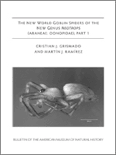
BULLETIN OF THE AMERICAN MUSEUM OF NATURAL HISTORY
Exploring the depths of agricultural and biological sciences.BULLETIN OF THE AMERICAN MUSEUM OF NATURAL HISTORY, published by the American Museum of Natural History, represents a cornerstone of scholarly communication in the fields of Agricultural and Biological Sciences and Ecology. With an impressive impact factor highlighted by its Q1 quartile rankings in both categories, the journal publishes high-quality, peer-reviewed research that significantly contributes to the understanding of natural history. Researchers will find this journal indispensable as it covers a diverse range of topics, providing insights that drive ecological research and biological discovery forward. Although not open access, the Bulletin is widely available through institutional subscriptions, making it accessible to both established professionals and students eager to stay informed about the latest advancements in the field. Its commitment to advancing knowledge from 1996 to the present ensures that it remains relevant and highly regarded within the scientific community.
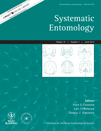
SYSTEMATIC ENTOMOLOGY
Advancing the Frontiers of Insect KnowledgeSYSTEMATIC ENTOMOLOGY is a premier journal published by Wiley, specializing in the field of entomology with a particular focus on insect systematics, ecology, evolution, and behavior. With its strong academic reputation, this journal has achieved a remarkable Q1 ranking in both Ecology, Evolution, Behavior and Systematics and Insect Science categories, affirming its influence and importance in advancing research in these critical areas. SYSTEMATIC ENTOMOLOGY has a broad scope, making it a valuable source for original research, reviews, and methodological advancements that contribute to the understanding of insect biodiversity and systematics. Operating from the United Kingdom, the journal is dedicated to fostering knowledge and innovation within the scientific community, ensuring that high-quality research is accessible to researchers, professionals, and students alike. The journal's consistent publication since 1976 and its continued relevance up to 2024 exemplify its commitment to the field and its readers.

ORIENTAL INSECTS
Bridging Science and Conservation in Insect StudiesORIENTAL INSECTS is a distinguished journal dedicated to advancing the field of Insect Science, published by the reputable Taylor & Francis Ltd. With its long-standing history since 1967, this journal provides a platform for innovative research focused specifically on the diverse insect fauna of the Oriental region, encompassing topics such as taxonomy, ecology, physiology, and behavior. The journal is indexed with an ISSN of 0030-5316 and an E-ISSN of 2157-8745, making it easily accessible to a global audience. Although it currently does not operate under an Open Access model, its rigorous peer-review process ensures the dissemination of high-quality research. As a Q4 journal in the Insect Science category for 2023 and ranked 103 out of 181 in Scopus, ORIENTAL INSECTS remains a vital resource for researchers, professionals, and students seeking to enhance their understanding of insect biodiversity and conservation. Located in the United Kingdom, it is committed to promoting the latest scientific findings and fostering collaboration among entomologists worldwide, contributing significantly to the academic community.

AMERICAN MUSEUM NOVITATES
Pioneering Research at the Intersection of Science and Culture.AMERICAN MUSEUM NOVITATES, published by the American Museum of Natural History, stands as a prestigious platform for scholarly dissemination in the fields of Archeology, History, and Museology. With an impressive impact factor evidenced by its Q1 rankings in 2023 across these categories, this journal is a vital resource for researchers and professionals seeking to advance knowledge and understanding within these disciplines. The journal's commitment to quality research is reflected in its high rankings within Scopus, where it boasts a remarkable rank of #37 in History and #4 in Museology, showcasing its relevance and influence in the academic community. While open access options are not currently available, readers can access compelling research articles that span from its inception in 2005 to the present date, making it an essential reference for those interested in the historical and cultural implications of natural history and museum studies. Located in the heart of New York, this journal fosters a collaboration between scientists and scholars, enriching both academic and public understanding of our shared heritage.

Papers in Palaeontology
Shaping the Future of Paleontological DiscoursePapers in Palaeontology, published by WILEY, is a premier academic journal dedicated to advancing the field of paleontology. With an admirable impact factor and positioned within the Q1 category in Paleontology for 2023, this journal has established itself as a leading platform for innovative research and discussion, ranking 17th out of 113 in Scopus’s Earth and Planetary Sciences category. Since its inception in 2015, Papers in Palaeontology has aimed to publish high-quality, peer-reviewed articles that explore the diversity of ancient life forms and their evolutionary history. Researchers, professionals, and students alike will find valuable insights and rigorous analyses that contribute to the understanding of our planet’s past. Although Open Access options are not available, the journal provides a wealth of knowledge essential for anyone engaged in the study or practice of paleontology, solidifying its importance in shaping future academic discourse.
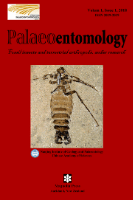
Palaeoentomology
Fossils Tell Stories: Discovering the World of Ancient InsectsPalaeoentomology is a leading journal dedicated to the study of fossil insects, fostering a deeper understanding of historical biodiversity and ecosystem dynamics. Published by MAGNOLIA PRESS, this journal provides an essential platform for researchers, educators, and students interested in entomological paleontology and related disciplines. Featuring a wide range of articles that explore fossil records, evolutionary patterns, and paleoenvironments, it serves the scientific community by enriching our understanding of the past. Although currently not open access, the journal prioritizes rigorous peer-review standards and aims to maintain a high impact factor, ensuring that published research meets the evolving demands of the field. Based in Auckland, New Zealand, it welcomes contributions from both established and emerging scientists worldwide, contributing to a vibrant discourse in the study of ancient insects and their ecological relationships.
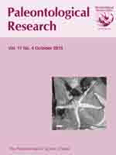
PALEONTOLOGICAL RESEARCH
Charting the Course of Earth's Biological Legacy.PALEONTOLOGICAL RESEARCH, published by the PALAEONTOLOGICAL SOCIETY OF JAPAN, is a prominent peer-reviewed journal that addresses key developments in the field of paleontology, ecology, and evolutionary biology. With an ISSN of 1342-8144, this journal has established itself as a vital resource for researchers and professionals who seek to explore the intricate history of life on Earth, integrating insights into evolutionary dynamics and ecological frameworks. Operating since 1997 and with content converging up to 2023, PALEONTOLOGICAL RESEARCH occupies a notable position, ranked in the second quartile within both Ecology, Evolution, Behavior and Systematics and Paleontology categories. While it is not an open-access journal, its rich repository of studies significantly contributes to the academic community. Researchers and students engaged in the exploration of ancient ecosystems and their implications for current biodiversity are sure to find valuable insights within its pages, reinforcing the journal's importance as a leading platform for disseminating paleontological knowledge in Japan and beyond.

Zoosystematics and Evolution
Fostering collaboration in the study of animal diversity.Zoosystematics and Evolution is a premier peer-reviewed journal dedicated to the fields of animal science, zoology, and evolution, published by Pensoft Publishers. With a commendable Q1 ranking in multiple categories including Animal Science and Zoology, Ecology, Evolution, Behavior and Systematics, as well as Insect Science, this journal stands out as a vital resource for researchers and professionals engaged in the dynamic study of biodiversity and systematics. Since transitioning to Open Access in 2014, it has ensured that groundbreaking research is readily available to a global audience, thus fostering collaborative advancements and facilitating the dissemination of knowledge. The journal has a significant presence in both Scopus and various academic indices, enhancing its reputation and impact within the scientific community. Based in Bulgaria, at 12 Prof Georgi Zlatarski St, Sofia, the journal continues to thrive, contributing valuable insights that drive scientific inquiry and exploration in the ever-evolving realm of zoological research.
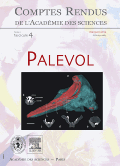
COMPTES RENDUS PALEVOL
Where Past Meets Present in Earth SciencesCOMPTES RENDUS PALEVOL, published by ACAD SCIENCES in France, stands as a pivotal journal in the field of paleontology. With an ISSN of 1631-0683 and an E-ISSN of 1777-571X, this esteemed publication provides a platform for innovative research and scholarly discourse, contributing significantly to the understanding of Earth's biological history. Having achieved a commendable Q2 rank in the 2023 Paleontology category and positioned at Rank #63 out of 113 in the Scopus Earth and Planetary Sciences segment, it underscores its relevance and influence in the scientific community. The journal's converged years from 2002 to 2024 reflect a commitment to ongoing research and knowledge dissemination. Although currently lacking open access options, the journal's rigorous peer-review process ensures the integrity and quality of published articles, making it an essential resource for researchers, professionals, and students striving to explore and expand their expertise in paleontological sciences.
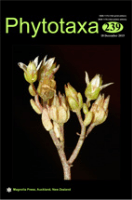
Phytotaxa
Fostering Global Insights into Plant EvolutionPhytotaxa, published by MAGNOLIA PRESS, is an esteemed journal in the fields of Plant Science and Ecology, Evolution, Behavior and Systematics. Established to cater to the growing need for high-quality research dissemination in botany, this journal presents the latest findings in plant taxonomy, systematics, and biodiversity. With its H-Index reflecting significant academic influence, and recognized as Q2 in Plant Science and Q3 in Ecology by Scopus, it stands as a reputable source for scholars and practitioners alike. The journal operates without open access restrictions, allowing for a wider reach to its audience. Positioned in New Zealand, Phytotaxa has been pivotal since its inception, contributing to the global understanding of plant diversity and ecology from 2010 to 2024. Its rigorous peer-review process ensures the high quality of published articles, making it an essential resource for researchers, professionals, and students dedicated to advancing the field of botany.